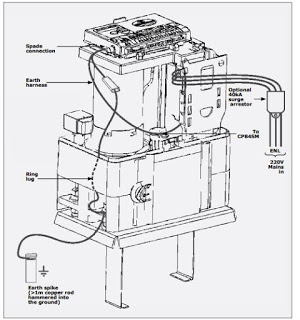
But first, a quick lesson in elementary physics.
For all its many uses and myriad benefits to the human race, electricity, as a rule, is still a bit on the lazy side, and it will always look for the path of least resistance. It’s sort of like that kid (read: me) who always got picked last for the softball team and would simply drop dead halfway through an obstacle course, a half-consumed hot dog in one hand. When an electrical surge takes place, there’s a build-up of charge, and all those extra electrons need to go somewhere. Think of it as being at one of those family gatherings where, one moment you’re standing talking to your favourite granny, and the next you’re drowning in a sea of distant aunts and cousins. Things can get pretty crowded for our friends the electrons, and the earth provides a large surface where they can be dumped and be spread out. That’s why we refer to a circuit as being “earthed”.
With regards to lightning, the mechanics are pretty interesting, if not fully understood. What happens is that electric current builds up within the thundercloud (caused by bits of ice bumping against each other like nature’s bumper cars), and the positive and negative charges start to separate. The positive charges are lighter and float to the top of the cloud, while the negative charges sink to the bottom.
This lends credence to the belief that positivity will get you to the top while negative thoughts will just drag you down.
During a thunderstorm, the ground beneath the thunderclouds tends to become positively charged, and there’s attraction between the negatively-charged clouds and the positively-charged earth. This fiery love affair makes itself known to the world through, you guessed it, lightning. It’s pretty romantic, don’t you think?
So, what does your gate motor have to do with it?
Again, it all comes down to the path of least resistance. Cables, wires and even electronic components generally contain copper, and copper is a conductor (a material with a very low resistance) so it makes sense that the current would want to take this nice, easy shortcut to its destination, the earth. To the electrons, it’s like being lathered in sunscreen and going down one of the waterslides at Sun City. During a lightning strike or power surge, very high voltages are generated and these voltages may very well find that their quickest route to ground is through your gate motor, an appliance which has not been designed to deal with such excessive voltages. If there is no earth return path, the extremely high voltage could end up destroying your gate motor’s electronics or, in extreme cases, even cause it to catch alight. Yes, we have seen firsthand what happens to gate motors that haven’t been properly earthed, and it ain’t pretty.
What does a proper earthing system look like?
Remember, the charge is looking for that sweet, sweet shortcut, and it’s up to you to provide it. Connecting your gate motor’s earth wire to a copper earth “rod” or “spike” (via one of the securing bolts) will provide a solid conductor through which the high voltage can travel to ground. You can also connect an optional surge arrestor for additional lightning and surge protection.





